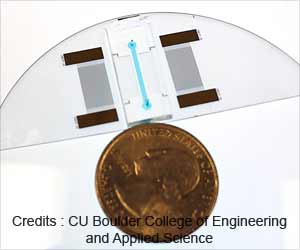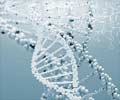A seven year old boy’s stem cells were used to produce transgenic skin to treat his severely damaged skin caused by a genetic skin condition.
- Gene therapy helps restore 80 percent of epidermis of a 7 year old boy suffering from a genetic skin disease.
- Epidermolysis bullosa is caused due to a defect in protein-forming genes that are required for skin regeneration.
- Epidermal skin cells were corrected with the correct copy of the gene to create the transgenic skin that was transplanted on to the patient.
Epidermolysis bullosa
It is a congenital skin disease that causes extensive damage to the epidermal layer of the skin. It is caused due to genetic defects in protein forming genes that are crucial in skin regeneration. Even the slightest of stress to the skin can result in blisters, wounds and skin loss with scar formation. There is presently no cure for the disease. The disease reduces quality of life and can be life threatening depending on disease severity. In advanced cases, it can even affect internal organs leading to organ dysfunction.Hassan’s Story
Hassan, a seven year old boy suffering from epidermolysis bullosa was brought into the intensive care unit at Katholisches Klinikum Bochum in June 2015 when 60 percent of his epidermis was already lost. This is what Dr Tobias Rothoeft, Consultant at the University Children's Hospital at Katholisches Klinikum Bochum had to say about Hassan’s condition; "He suffered from severe sepsis with high fever, and his body weight had dropped to a mere 17 kilogrammes - a life-threatening condition."Gene therapy
When all medical and surgical approaches failed in treating the child, the team decided to perform an experimental approach--using the child’s own stem cells to produce transgenic skin which was transplanted on to the child. Previously, a phase I/II clinical trial provided promising evidence that local transplantation of transgenic skin can generate a functional epidermis. This showed permanent (the longest follow-up being of 12 years) correction of skin lesions in patients with epidermolysis bullosa. However, the tested area of transplanted skin was very small to substantially improve the patient’s quality of life.In the current study, almost the entire epidermis, approximately 0.85 square meters, of the seven year old boy was transplanted with transgenic skin derived from keratinocyte cultures. The keratinocytes were taken from the non-blistering part of the child’s body and cultured in the laboratory. Then, the defective copy of the gene was replaced with the correct copy using retroviral vectors. The developed transgenic skin was then transplanted on to the wound sites of the patient, including the arms and legs, entire back, flanks, and partially to the stomach, neck and face.
Results of the gene therapy
There was tremendous improvement in Hassan’s condition after the transplant. Today, almost two years since the therapy began, the transplanted epidermis remains resistant to stress with no scars and hair formation is at its beginning stages. Hassan now attends school and has a social life."This approach has enormous potential for research and development of new therapies for the treatment of epidermolysis bullosa as well as other diseases and trauma causing large skin defects" says Tobias Hirsch.
Reference:
- Tobias Hirsch, Tobias Rothoeft, Norbert Teig, Johann W. Bauer, Graziella Pellegrini, Laura De Rosa, Davide Scaglione, Julia Reichelt, Alfred Klausegger, Daniela Kneisz, Oriana Romano, Alessia Secone Seconetti, Roberta Contin, Elena Enzo, Irena Jurman, Sonia Carulli, Frank Jacobsen, Thomas Luecke, Marcus Lehnhardt, Meike Fischer, Maximilian Kueckelhaus, Daniela Quaglino, Michele Morgante, Silvio Bicciato, Sergio Bondanza, Michele De Luca. Regeneration of the entire human epidermis using transgenic stem cells. Nature, (2017); DOI: 10.1038/nature24487
Source-Medindia














